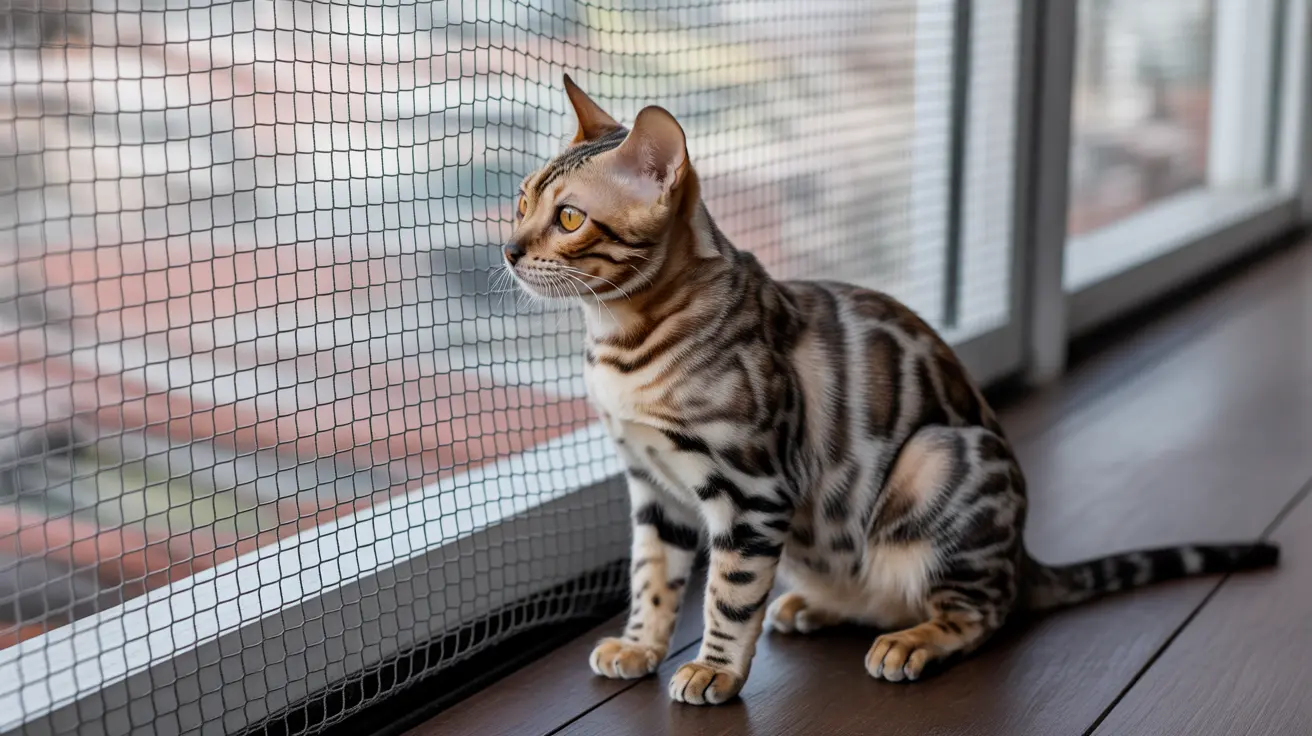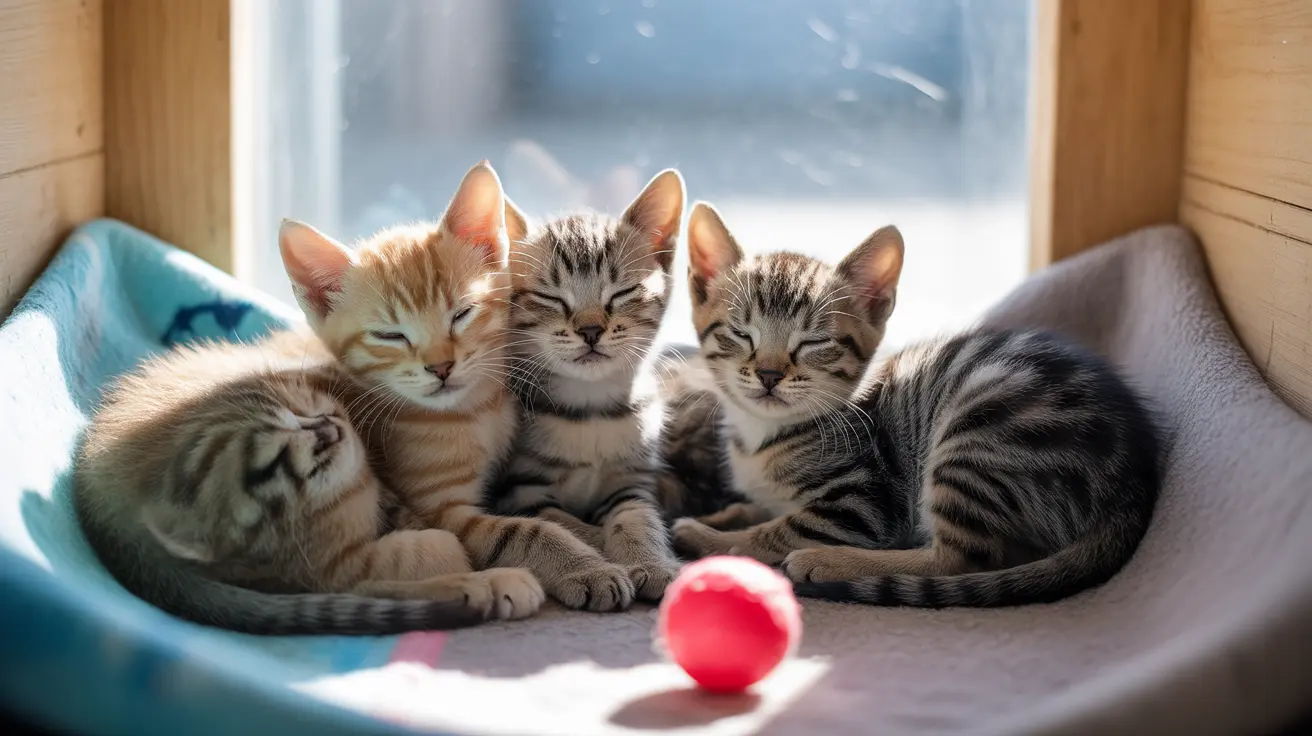For cat owners living in apartments or high-rise buildings, creating a safe outdoor space for their feline friends is crucial. Cat-proofing a balcony isn't just about preventing falls—it's about crafting a secure environment where your cat can safely enjoy fresh air and outdoor enrichment without risk of injury or escape.
In this comprehensive guide, we'll explore proven methods to transform your balcony into a cat-safe haven, including essential safety measures, recommended materials, and expert tips for creating an engaging outdoor space your cat will love.
Understanding the Risks: Why Cat-Proofing is Essential
Before diving into solutions, it's crucial to understand why proper cat-proofing is non-negotiable. Cats are naturally curious and agile creatures, but they lack the ability to gauge the dangers of heights. The "high-rise syndrome"—a term veterinarians use to describe injuries from falls from elevated places—is unfortunately common in urban environments.
Even cats with excellent balance can be startled by sudden noises or become distracted by birds, leading to dangerous situations. Falls from as little as two stories can result in severe injuries or worse.
Essential Materials for Cat-Proofing Your Balcony
Mesh and Netting Solutions
Strong, weather-resistant mesh with holes smaller than one inch is your first line of defense. Look for materials specifically designed for pet safety that offer:
- UV resistance
- Chew-proof construction
- Proper tensile strength
- Weather durability
Solid Barrier Options
Clear plexiglass panels or polycarbonate sheets provide excellent protection while maintaining your view. These materials:
- Eliminate climbing opportunities
- Prevent paws from getting stuck
- Withstand weather exposure
- Maintain aesthetic appeal
Professional Installation vs. DIY Approaches
While many cat parents opt for DIY installation, professional services offer several advantages:
- Guaranteed compliance with building codes
- Expert assessment of weak points
- Professional-grade materials and tools
- Warranty protection
Creating an Enriching Environment
A properly cat-proofed balcony should include enrichment features that make it an engaging space:
Safe Furniture and Accessories
- Secured cat trees and scratching posts
- Weather-resistant beds and perches
- Shade structures or cat-safe plants
- Fresh water station
Climate Considerations
- Protection from direct sun
- Shelter from rain and wind
- Non-slip flooring materials
- Proper ventilation
Maintenance and Regular Safety Checks
Regular maintenance is crucial for long-term safety:
- Weekly inspection of all barriers
- Immediate repair of any damage
- Seasonal weather-proofing
- Testing of all attachment points
Frequently Asked Questions
How do I safely install mesh or netting to cat-proof my balcony?
Install mesh using heavy-duty cable ties or tension rods, ensuring it's pulled taut with no gaps. Secure all edges, including the bottom, and use extra attachment points at stress areas. Consider professional installation for complex setups.
What materials are best for preventing my cat from squeezing through balcony railings?
Use pet-grade safety mesh with holes smaller than 1 inch, or clear plexiglass panels. Both should be UV-resistant and properly secured with no gaps. Commercial-grade materials specifically designed for pet safety are recommended.
How can I enrich my cat's balcony space to keep them entertained and safe?
Add cat-safe features like secured scratching posts, elevated perches, comfortable beds, and interactive toys. Ensure all items are weather-resistant and properly anchored to prevent tipping or falling.
What are the most common risks for cats on balconies and how can I prevent falls?
Common risks include gaps in railings, unstable furniture, and sudden distractions like birds. Prevent falls by installing proper barriers, removing climbing launch points, and ensuring all furniture is stable and away from edges.
Should I ever leave my cat unsupervised on a balcony, even if it's cat-proofed?
No, even with comprehensive safety measures in place, cats should never be left unsupervised on a balcony. Always monitor your cat's outdoor time to ensure their safety and the integrity of your protective measures.
Conclusion
Creating a cat-safe balcony requires careful planning, proper materials, and regular maintenance. While the initial setup may require significant effort and investment, the peace of mind and enrichment it provides for your feline friend make it worthwhile. Remember that no safety measure is perfect—always supervise your cat during balcony time and regularly check all protective features to ensure they remain secure.






